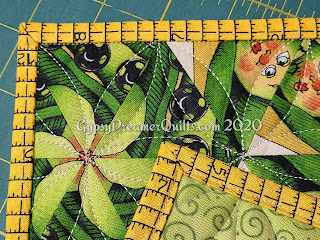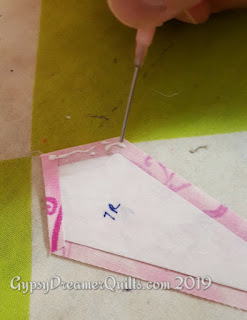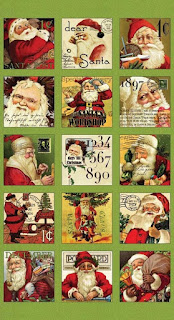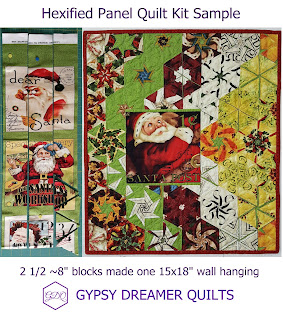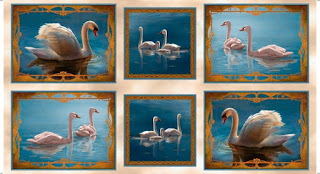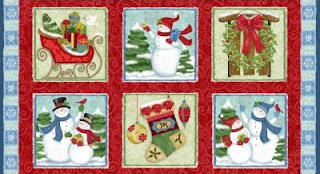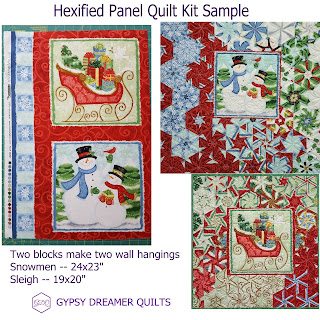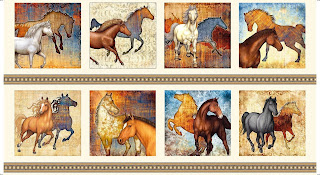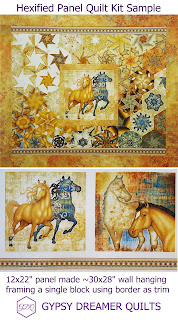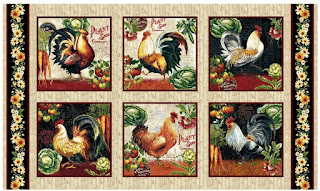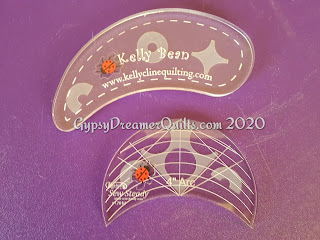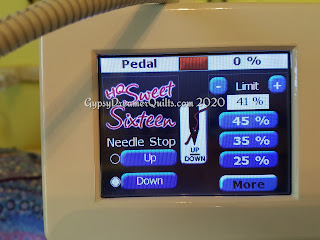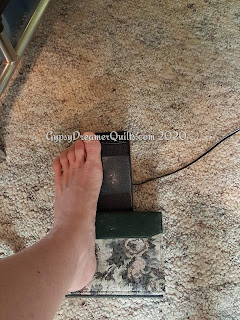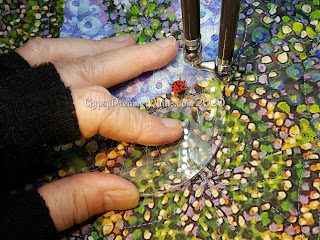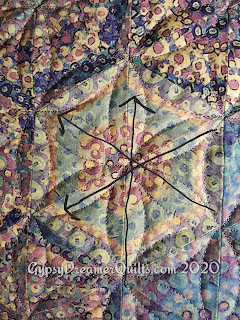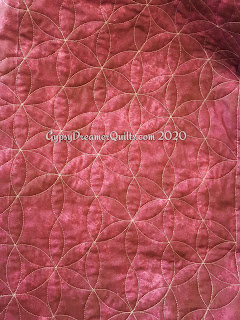This tutorial has been updated with a third version as of April 6, 2020. Please scroll down to find the serged version with t-shirt ties!
Yet another update that modifies version 3 slightly for ear loops instead of ties. Scroll down to learn more! May 27, 2020

New information I found this week was reported in a news release from the Wake Forest Baptist Medical Center about a new study on the effectiveness of fabrics being used to make cotton masks and how much they filter. The best fabrics include tightly woven batiks with a layer of flannel. I've been using a fun cotton layer, batik inner lining, and flannel lining for those without a pocket. For those with a pocket for an additional filter (provided by the recipient facility), I'm using the fun cotton, two layers of batik (one cut width of fabric and the other length of grain), and a muslin pocket layer towards the face. To learn more about the study which said the best homemade masks provided as much as 79% filtration, check out the news release at: Testing shows type of cloth used in homemade masks makes a difference.
 |
| I'm ready if I need a mask when going out and about. |
The Global Pandemic with COVID-19 Virus
has us Sewing with a Purpose!
We are sewing with a purpose as we are learning to navigate the COVID-19 virus crisis. So far we are now under a "stay at home" order in our county. We have already been staying in as much as possible with minimal trips out for necessities only--occasional trips to the post office to check our mail and to the grocery store or pharmacy. In the meantime, to keep from going stir crazy or being overwhelmed from the constant news overload, we are back in the sewing room.
 |
| Les wearing his OVER an N95 from his construction days. |
I was asked by my daughter if we could make face masks. She works in a continuing care retirement community with seniors in all levels of care from independent to assisted to convalescent in the same community. The director of clinical services had mentioned needing masks, I'm guessing during a staff meeting, which led to a discussion of my quilting/sewing skills, and thus the request was issued. As they both said, anything is better than nothing and these can help extend the life of the N95s that are so hard to come by right now by adding a cover over it and replacing as needed. We understand, and hope you do, too, that these are NOT CDC approved face masks; however, as the director of clinical services said, they are better than nothing and can go a long way to help their staff keep themselves and their patients at least safer, or to extend the life of their N95s until more become available.
I looked at a number of patterns and videos, and decided to tweak a version to suit our needs. I had read some people were adding an extra layer as a filter; however, I worried about the breathe-ability of those added layers and suggested materials. Rather than guess what a clinician might use for a filter, I made a pocket where such a filter could be added as needed. I also saw some using elastic to be hooked behind the ears; however, picking a "one-size-fits-all" length for the elastic seemed problematic. Also, in the process of being washed over and over, and going through a sterilization process, I worried that the elastic would deteriorate much faster, so I chose to add ties. Being made of cotton fabrics, these are fully washable and can be sterilized.
Be sure to scroll down for Version 2, an alternate finish with a different way to make the ties.
COVID-19 Homemade Face Mask tutorial--Version 1
This is for a 9"x6" finished face mask with pleats and ties, and a hidden pocket to add a filter.
To begin, I took a package of double fold bias tape and stitched the length of it with a zigzag stretch stitch. Because the bias tape is so narrow, I cut 1.5" wide strips of water soluble stabilizer that could run under the tape along the feed-dogs of the machine while feeding the bias tape through the front of a braid foot, which is designed to keep a braid/bias tape/ribbon centered as it is stitched onto something. The stabilizer is very light weight, so tended to pull up as I stitched, but once trimmed off and then washed to dissolve the remainder, it didn't seem to make a difference in the stitching. By using the stretch zigzag stitch, the bias tape retains it's ability to stretch without breaking the stitches that will be important when tying them on. You could easily substitute ribbons or homemade bias tape. Get creative! Dig through your stash and find something that works for you and that will be user friendly for the recipients.

- Cut 1 10x7" piece of good quality/tightly woven cotton. My choice is batiks or quilting cottons.
- Cut 1 10x7" piece of lining. I'm using remnants of muslin, cotton sateen, and other leftovers in my stash. Fold one long edge of the lining piece ~3/8" twice and stitch to make a finished edge/rolled hem.
- Cut 1 10x3" piece of lining and fold in half, press.
Sew 10x3" folded piece and 10x7" piece with one edge finished to the long edge of the 10x7" mask front, raw edges together. If you're using a one-way design/print, sew the 10x3" piece to the bottom of the mask front. Press seams towards the linings.
Cut 4 ties at 15.5" long and pin in the corners of the mask front just below the seams, sticking the end out ~1/4-1/2" beyond the edges of the face mask. These short tails will be double stitched for extra security in the next step.
Fold the lining pieces over the face mask front, keeping the ties secure at the folds. Over lap the folded lining piece over the larger lining piece, making sure raw edges are aligned along both sides, pinning to hold edges together, with the ties tucked safely inside.
Stitch down both edges of the face mask, back-stitching over the ties at each corner.
Turn the mask right-side out, pulling the ties to "pop" the corners out. Roll and finger press the side seams before heat pressing them. .
Take back to your machine and top-stitch around ~3/8" to secure the layers and encase the seam allowances inside.
With the hidden pocket edge at the top, begin folding ~1/2" pleats at both 6" edges of the mask. These pix show 2 pleats pinned and one more to do. You should get 3 fairly evenly spaced pleats.
Return to your machine once again and stitch down the pleated edges of the mask. I stitched along the top-stitch line, turned and stitched 2 stitches over towards the center, and turned again and stitched back, making two parallel lines of stitching ~1/8" apart to secure the pleats on each end of the mask.
The face mask is now complete and ready for a final press to set the pleats across the width.
The hidden pocket in the lining, accessible from the lining side at the bottom of the mask, allows those using it to add a filter if needed.
***
COVID-19 Homemade Face Mask tutorial--Version 2
This is for a 9"x6" finished face mask with pleats and ties, and a hidden pocket to add a filter.
This version is similar to the mask above, only the ties are created differently.
Stitch lining pieces to long edges of face mask front as described above. Fold lining pieces at seams, right sides together to the face mask front, overlapping the short piece over the longer piece, and baste ~1/4" along short sides.
Make the three ~1/2" folds on the short sides, pinning in place.
Cut a 36" long piece of 3/4" or 1/2" double-fold bias tape (prepackaged or homemade) and mark center. Unfold and place a single layer of bias tape centered on wrong side of face mask along edge with pleats, and stitch in place, just shy of the fold line.
After bias tape is stitched in place, refold and wrap the double fold around to the front of the mask and pin in place.
Using a zigzag or stretch stitch, stitch the entire length of the 36" long bias tape, securing the folds and the piece wrapped around the pleated face mask in one continuous stitching line.
Repeat for the opposite side and you'll have a quick finish for a face mask with a hidden pocket in the lining to add additional filters as the user desires.
***
[Updated April 6, 2020]
COVID-19 Homemade Face Mask tutorial--Version 3
This is for a 9"x7" finished face mask with pleats and ties, and an optional inner pocket to add a filter. For this latest version, I'm stacking my layers, which in this case are fun cotton/tightly woven batik/flannel lining and then serging around them. For those who have sergers, this is a fast way to finish the layers for a quick finish if you're making lots of masks to donate.
Once the edges are serged, fold and pin the three pleats, and on you sewing machine, stitch around the mask, securing the pleats and adding one more round of stitching to secure all edges.
I've run out of bias tape and making homemade bias is, in my opinion, a time consuming pain. So, a friend was using strips of t-shirts which was a perfect solution! I have several stacks of t-shirts waiting to be cut up into blocks for quilts and I typically throw away the extra. I now have the logos cut out and ready to stabilize and have used the body of the t-shirts cut into 1.25" strips.
These make perfect ties that, if long enough, can be come a binding on the short, pleated ends with long ties in one piece. On extra large shirts, a single round cut in half was long enough to do the ties/binding on both ends of a mask.
To start, on the wrong side of the mask, center the long t-shirt strip and stitch to the mask, with the ribbing side up. When you wrap the t-shirt strip around to the front, the wrong side is up, which will help the strip turn into t-shirt rope, naturally curling into a tube for the ties.
Once the binding/tie is attached to the back, turn the mask over and roll the t-shirt strip around the edge of the mask creating a binding. I was able to turn under the edge ~1/8 to 1/4", just enough to catch as I top-stitched the binding to the top, back stitching at each end.
After the binding is attached, at the end of each string tie a simple know. I folded the strip in half, ribbing side in, before knotting. Having the wrong side out encourages the strip to roll when pulled.
Stretch the knotted ties gently to get the t-shirt yarn to stretch out and roll.
This version is fast to make and the t-shirt ties work great! Don't cut them too narrow or they will break when stretched. I found the 1.25" width worked great and allowed enough width to apply as a binding.
For a great tutorial on making t-shirt yarn, check out
https://www.craftpassion.com/recycle-tutorial-making-of-t-shirt-yarn/
To use up short pieces of t-shirt strips, I simply folded one end in, wrong side out, as if making double-fold bias tape, laid it on top of the mask corner, and stitched diagonally, reversing 3-4 times, to secure the tie in place. Again, tie a knot at the end of each tie and pull gently the strip to create the rolled t-shirt yarn.
***
[Updated May 27, 2020]
COVID-19 Homemade Face Mask tutorial--Version 3.1
We are still serging our three layers together--fun cotton front / tightly woven, high threat count sheet or preshrunk flannel inner / tightly woven batik lining. The adult masks are made 9x7" and have 3 pleats. The child size we've done is 7.5x5 as requested by the local school district for their fall mask supply or 7x6 that we made for our grandkids. Both work, so pick the one you feel will best fit your child/grandchild.
For most of our masks we are now adding ear loops rather than ties, unless ties are requested. For these we are cutting the t-shirt yarn at 7" (6.5" for kids) and sewing both ends on at the corners of the pleated end of the masks at the same time we are doing our final machine stitching around the mask to secure the pleats.
This is the ~120 child size masks with just two pleats that we made out of fun prints for the kids at the Baldwin Elementary Center to use when school starts up again. To date, we have now made ~825 masks that have been donated in and around Baldwin City, Lawrence, Overbrook, Olathe and Sabetha, Kansas, as well as to family and friends from coast to coast.
***
I hope this tutorial has been helpful. I know there are many, many quilters and crafters out there making face masks for our healthcare professionals. Don't limit yourself to donating to hospitals. Check with nursing homes, physical therapy clinics, senior housing facilities that may have clinical staff, and so many other options where there may be a need.
Thank you to all who are helping with the COVID-19 Face Mask efforts!
More snippets from the sewing room soon...
Liz



